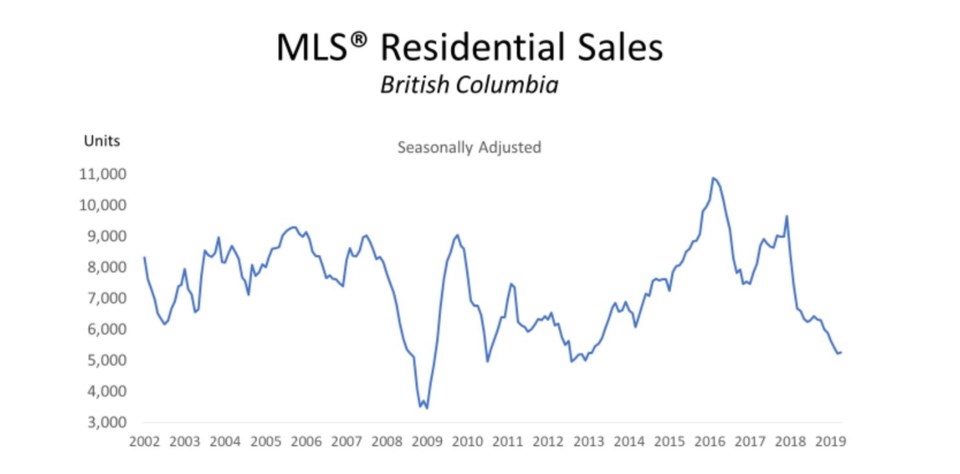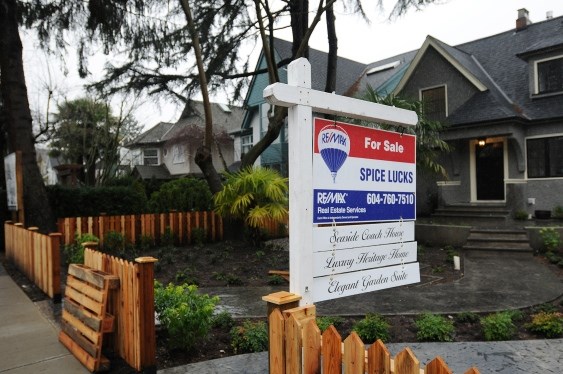There has been only a meagre spring awakening when it comes to B.C. home sales this year, with April maintaining the trend for dampened activity.
A total of 6,652 residential unit sales sold via the MLS in April, a drop of 18.9 per cent from the same month last year, according to British Columbia Real Estate Association (BCREA) figures released May 14.
However, that’s a month-over-month increase of 16 per cent from March’s slow sales, and in terms of the annual drop in transactions, an improvement over March’s 27 per cent annual decline.
The month-over-month rise is typical of this time of year, said the BCREA. “B.C. home sales were essentially unchanged from March on a seasonally adjusted basis,” said Cameron Muir, BCREA’s chief economist.

The BCREA continued its assertion that the slowdown in sales has been caused by the federal mortgage stress test making it harder to buy homes. Muir added, “Prospective home buyers continue to grapple with the decline in their purchasing power caused by federal government changes to mortgage policy.”
The number of homes for sale on the MLS across the province continues to build up. Active residential listings rose 33.6 per cent year over year to 38,672 units. The ratio of sales to active listings fell over the past year from 28.4 per cent (a seller’s market) to a balanced market of 17.2 per cent.
This increased choice of homes, combined with the reduction in buyer purchasing power, has reduced the average price of a B.C. home sold on the MLS in April by 6.2 per cent year over to $685,304. However, this is slightly higher than the average price of a B.C. home sold year to date, down seven per cent year over year to $680,671.
While all the boards across the province reported a decline in their sales-to-listings ratios, some are still in seller’s market territory – including Victoria, Vancouver Island and Kamloops. Greater Vancouver is the closest to being a buyer’s market at 12.3 per cent.
Only five of the 12 boards reporting to the BCREA cited an average annual price decline, with Kamloops, Vancouver Island and Prince George all seeing notable price increases. However, the significant declines seen in the larger markets of Greater Vancouver and the Fraser Valley pulled the provincial average down.




